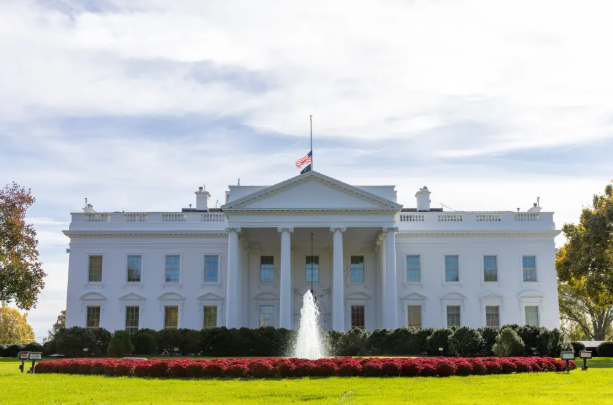Longest Government Shutdown in U.S. History Grinds Into 36th Day as Trump, Democrats Dig In
The federal government has now been shut down for 36 days — the longest in U.S. history — with no signs of resolution as millions of Americans face disruptions, missed paychecks, and delayed services. From air travel warnings to food assistance cuts, the shutdown has rippled across the country with increasing urgency.
President Donald Trump has so far refused to negotiate with Senate Democrats, who are demanding protection for expiring health care subsidies before voting to reopen the government. Democrats, in turn, question whether Trump would keep his word even if they agreed to pass a temporary funding bill. Their skepticism grew after his administration moved to restrict food aid under the SNAP program, despite a court order requiring continued distribution.
Trump has scheduled a Wednesday morning meeting with GOP senators, but no direct talks are set with Democratic leaders. Instead, a loose group of centrist senators is attempting to break the deadlock behind closed doors. Their efforts intensified following Tuesday’s off-year elections, where Democrats swept governorships in Virginia, New Jersey, and New York City — a signal of voter discontent with the ongoing stalemate.
Mounting Pressure and Political Risk
Senator Amy Klobuchar, D-Minn., voiced the frustration of many Democrats in a fiery floor speech: “Stop this mess, come to the table, negotiate it.”
But even as talks heat up behind the scenes, Senate Democrats emerged from a lengthy closed-door meeting Tuesday with no clear path forward. “We’re exploring all the options,” Senate Majority Leader Chuck Schumer said afterward.
This shutdown is already more severe than the 35-day closure under Trump’s first term, which ended without funding for his U.S.-Mexico border wall. That time, Trump at least met publicly with congressional leaders. Now, Speaker Mike Johnson has sent the House home after passing a partisan stopgap bill, and the White House insists that Democrats must reopen the government before health care talks begin.
The impact is spreading fast. Federal workers are furloughed or working without pay. Key programs — including food aid, child care assistance, and housing support — are hanging by a thread. Transportation Secretary Sean Duffy warned that if air traffic controllers miss another paycheck, parts of U.S. airspace may need to shut down. “You’ll see mass flight delays, cancellations, maybe even closures,” he said earlier this week.
Labor unions are ramping up pressure on Congress to act, while Senate Republicans like Majority Leader John Thune, R-S.D., have begun urging their own party to consider compromise.
“Shutdowns are stupid,” Thune said flatly. “No one wins politically from a shutdown.”
Path to a Deal Still Murky
While some lawmakers are working toward a partial solution, progress is slow. A group of senators — including Susan Collins, R-Maine; Mike Rounds, R-S.D.; Jeanne Shaheen, D-N.H.; and Chris Coons, D-Del. — are huddling over how to reopen parts of the government with bipartisan support.
A proposed three-bill package, which would fund agricultural programs, military construction, and other broadly supported items, has emerged as a potential starting point. “It’s primed to do a lot of good things for the American people,” said Sen. Katie Britt, R-Ala.
But the biggest sticking point remains health care.
Expanded Affordable Care Act subsidies, funded through pandemic-era tax credits, are set to expire at year’s end. Millions of Americans are already receiving premium notices showing steep increases. Democrats want the subsidies extended. Republicans say they’ll only consider it with broader reforms to Obamacare — and not until after the government reopens.
Thune has offered Democrats a guaranteed vote on their health care proposal later this year, but many in his caucus remain unconvinced. They see Trump’s insistence on leverage as part of a broader attempt to sideline congressional authority in favor of executive action.
Trump Pushes Senate to Go Nuclear
Behind the scenes, Trump is pressuring GOP senators to eliminate the filibuster, a move that would allow Republicans to pass legislation with a simple majority. Democrats currently hold 47 seats, giving them the power to block most bills under current rules.
Ending the filibuster would allow Republicans to jam through their budget and end the shutdown — but it’s a line many in the Senate refuse to cross. Thune and others say the rule protects minority voices, regardless of which party controls Washington.
Despite holding a slim 53–47 majority, Republican senators have voted multiple times without success to break the stalemate, with Democrats rejecting the House-passed bill more than a dozen times.
Stalemate, Frustration, and Growing National Consequences
The White House remains firm: No talks on health care until Democrats vote to fund the government. Democrats won’t budge without protections for the expiring subsidies. And Americans — from federal workers to families relying on assistance — are caught in the middle.
The president may soon face another political crisis if the shutdown extends into February. The ripple effects could slam transportation, border enforcement, and military readiness.
And with Trump’s second term already under scrutiny from the courts, the press, and his political opponents, the pressure is mounting to deliver results — or face the consequences.
For now, the longest shutdown in American history shows no signs of ending.

